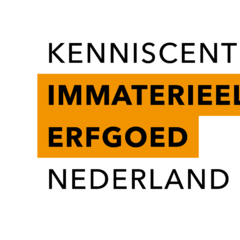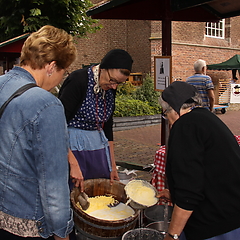Meuse hedge laying is traditionally a way to make hedges cattle-proof. The Meuse hedge style is characterised by the use of living material only, preferably hawthorn, that is present in the hedge. In this way the hedge becomes stronger and tighter over de years. Meuse hedge layers only use hand tools and only work in the winter period. Hedges in this style are mainly woven in ‘the high Netherlands’ (the provinces of North-Brabant and Limburg). When the stems of the hedge are as thick as a wrist, the hedge is ready to be laid. The first thing to do is to radically prune the hedge, so that the hedge layer can reach the branches. The hedge layer uses so-called pleachers and stakes. The pleachers are sawn obliquely with a pruning saw or, for the trained hedge layers, a traditional hiep (pruning knife). The connection with the sap stream (a piece of bark and wood) should be at least 0.6 inch and may not be broken. The cut-in pleacher is bent at an angle of 80 degrees and woven between the stakes. Every other forty inches there will be a stake and they are sawn in and woven at a height of between 47 and 51 inches.



